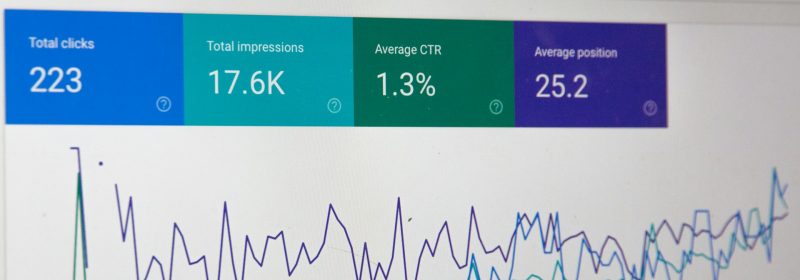What are the most important Google ranking factors in 2024?

You see it all over X (formerly Twitter), the panic arising from a new Google algorithm update. The dip in traffic—sometimes off the scale—brings about panic to lots of website owners. What worked well a few months ago, simply might not work at all now. And if you’ve not refreshed your search engine optimisation (SEO) game for a couple of years, you could be seriously off the mark. Staying abreast of changes means you can maximise opportunities for success and growth. In a nutshell, you need to improve SEO, rankings and traffic to generate more business. So, without further ado, let’s take a look at what Google wants from us in 2024.
High-Quality, Relevant Content
Firstly, Google is wise to churned-out, poor-quality content. It recognises keyword stuffing and other backhanded techniques. Ultimately, you need to focus on producing good-quality, relevant content that goes beyond surface-level information. You need to provide in-depth insights and solutions that give your target audience what they’re looking for.
The content also needs to be tailored to your target audience’s specific interests and potential pain points. Consider the target demographic wisely to make sure what you write resonates with them on a personal level. If your target is mainly Gen X, for example, you’ll need to adopt a different approach compared to targeting millennials. You should always approach things in a user-centric way. You want your content to add value, entertain, educate or solve a problem for your audience.
In terms of keywords, these should be integrated into your content naturally. This enhances your discoverability and helps it to align with user search intent. It also makes it more authentic and doesn’t sacrifice its readability.
Multimedia also helps. Using images, infographics, videos and interactive elements keeps your audience engaged in the flow of your content. The longer they stay on the page, the more likely they are to purchase your products or services.
Mobile-First Indexing
In 2020, mobile website traffic surpassed the 50% mark for the first time. Figures now show that almost 60% of web traffic worldwide is on mobiles. Google knows this and, therefore, prioritises websites that are mobile-friendly.
Google will more favourably see your website if it has a responsive design that automatically adjusts the content and layout to fit every device. The quicker it loads the better. Website visitors get bored quickly and so your page needs to load almost instantly to keep your audience interested.
The page design should be optimised for mobile. This means having:
- Clear navigation menus
- Fonts that are easy to read
- Touch-friendly buttons
- Intuitive gestures
The layout and formatting are also important. Your audience will get bored quickly with a wall of text. It should be broken down into chunks that can be scanned quickly. Headings should be concise and you should use bullet points and marked lists to prioritise key pieces of information.
Page Experience
The user experience on your page can be better explored by using Google’s Core Web Vitals. These are key indicators of your website’s quality for users. They assess the interactivity, loading performance and visual stability of the site. This means you can gain insights into how users perceive your web pages and interact with them.
Some of the most important performance metrics include:
- Largest Contentful Paint (LCP). This measures the time it takes for the main content of a page to load. You should aim to make this as quick as possible. Strategies include optimizing the server response time and using browser caching.
- Cumulative Layout Shift (CLS). This quantifies the amount of unexpected layout shifts that happen when the page is loading. To reduce this figure, you need to optimise image dimensions and avoid intrusive elements.
- First Input Delay (FID). This measures the responsiveness of your pages when users interact with them (e.g. when they click a link).
Google looks favourably on sites that score well in these areas so it’s worth optimising the page experience for ranking purposes as well as to improve things for your visitors.
Secure and Accessible Websites
A user (and Google) expects to have a secure website. The standard protocol must be HTTPS (Hypertext Transfer Protocol Secure). This encrypts all data transmitted between the user’s browser and your website. It means data is kept confidential and that login details, personal data and payment details are safe. This mitigates the risk of cybersecurity threats whilst also enhancing your brand’s credibility and trustworthiness.
The padlock icon and the “https://” in the address bar serve as trust signals, showing visitors that your website is secure. Google also favours HTTPS over HTTP and will rank them higher.
Besides security, having an accessible website with alt text, keyboard navigation and assistive technologies is important. This shows you can accommodate the diverse needs of your website visitors.
User Engagement
User engagement is crucial for your conversions and Google ranking. Metrics like Dwell Time and Click-Through Rates (CTR) can show you how users are interacting with your site. By exploring Dwell Time, you can see how long users spend on a page before they return to the search results. So, by optimising the quality and relevance of the content (as discussed above), your Dwell Time should be higher.
Your CTR can also influence your Google rankings. This is because a high CTR shows that users find the search result relevant to their query. When users then click on your site, it tells Google the content matches the search intent. Thus, your site looks relevant and valuable to other users with the same search queries. However, your CTR is heavily influenced by your meta titles and descriptions. Even if you have outstanding content, you’re going to have a low CTR if your metadata isn’t compelling.
Internal Linking Structure
Another factor to consider is your structure. Internal linking is important for distributing page authority. When you link strategically from high-authority pages to relevant target pages, you can boost your visibility and ranking.
Your internal linking structure should be designed in a way that enhances the navigation of your site. It should be logical and straightforward. This will improve your engagement and dwell time. A good structure also helps Google (and other search engines) crawl your website to index your content more efficiently. When there are clear pathways between pages, Google can understand their relevance and context, which works in your favour.
Social Signals
Social signals (engagement metrics and content sharing across social media platforms) can wield influence on your rankings too. Though they do not have a direct impact, they can magnify your reach and create increased traffic and backlinks. This works in your favour in terms of increasing SEO.
Metrics such as likes, comments and shares show how interested the audience is. When you have a high level of engagement, you’re more visible and have greater reach. This helps with brand recognition and website traffic.
Key Takeaways
- Adaptability is important: You need to be on the ball and adapt your strategies alongside Google’s algorithm updates.
- Quality over quantity: You should prioritise creating high-quality and relevant content that resonates. Be in-depth, offer solutions and add multimedia.
- Optimise for mobiles: This is a no-brainer. Most of your traffic will come from mobile devices, make sure users have a good experience.
- Page experience matters: Pay attention to Google’s Core Web Vitals and optimise your site accordingly.
- Don’t forget security and accessibility: This builds trust and enhances user experience.
- User engagement drives results: Get them there with compelling titles and descriptions and keep them there with your optimised content.
- Sort out your internal linking: Don’t neglect the structure. Make sure that page authority is distributed to facilitate search engine crawling and indexing.
- Increase reach with social signals: Share far and wide on social media for increased traffic and additional engagement to boost brand visibility and SEO performance.
